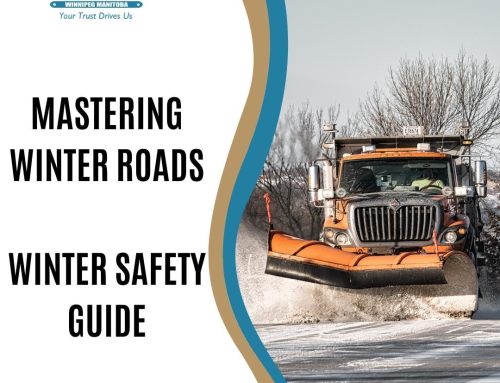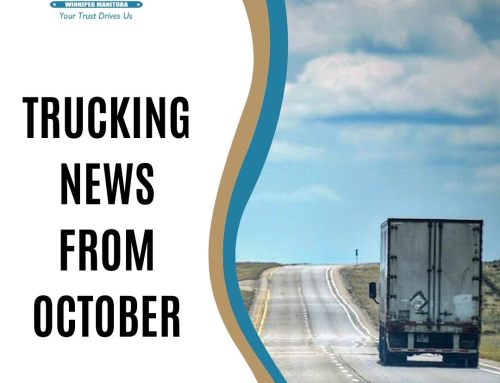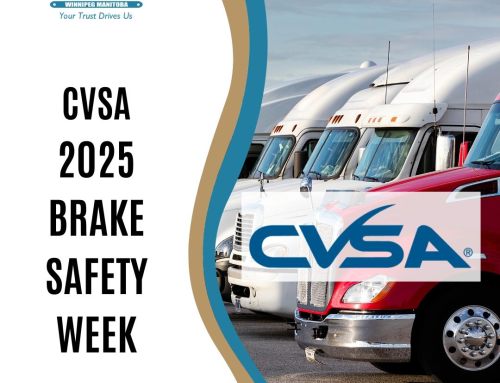 Truck Drivers Aren’t About to be Replaced by Robots
Truck Drivers Aren’t About to be Replaced by Robots
Autonomous truck technology is advancing quickly. More accurately, autonomous vehicle tech is advancing quickly. The technology will have a positive impact on the trucking industry. And no, this does not mean truck drivers will be replaced by technology.
Reactions to Freightliner’s demonstration of their Inspiration truck has been met with a lot of conclusion jumping by some truck drivers. On social media, we’ve seen drivers express concerns their jobs will be gone in a short time.
That couldn’t be farther from the truth. In fact, the developers of the technology and industry experts believe the new technology will be beneficial to the industry and improve the life of the driver.
So far tests and demonstrations of autonomous truck technology require the driver to be able to take over at any time and are under ideal conditions on the highway. Drivers face plenty of situations which are far from “ideal”.
“It’s amazing what our human brain and eyes can handle. When you drive, about 10 times a second you get input from your surroundings, primarily through your eyes. A driver must process that information and make the right decision 10 times a second. Software today is far from being able to handle that,” says Wilfried Achenbach, senior vice president, engineering, and technology for Daimler Trucks North America.
To put it simply, airliners have had auto pilot for decades and every flight has a pilot and co-pilot. Technology has improved the safety and efficiency of air travel and there are plenty of people needed to make the planes go up and down safely. Trains have operators and they’re on tracks. Again, technology continues to improve safety and efficiency.
There are obvious limitations to the technology. It can’t deliver or pick loads, it can’t troubleshoot itself, it can’t do a walk around or fix itself. The technology can basically go down the road and not run into something – when everything is perfect. There’s more to being a professional driver than that.
What is the New Autonomous Truck Technology
Autonomous vehicle technology is rated from L0 – L5. L0 is no automation where L5 is totally automated. Many automated systems are widely used today making trucks safer. These systems, collectively referred to as “Advanced Driver Assistance Systems” (ADAS), begin with simple convenience tools, like power steering, cruise control and automated gear changing.
Autonomous trucks, like the Freightliner Inspiration, are L3, where the driver must be ready at all times to take control. The Freightliner uses many technologies working together. The Calgary Regional blog describes it like this – “A radar unit in the front bumper keeps the truck the correct distance from vehicles ahead and identifies obstacles.
A front stereo camera recognizes lane markings and communicates with the steering gear to keep it centered in the lane.
Adaptive Cruise Control Plus combines active cruise and distance control with the ability to stop and go without driver intervention. It can control distance and speed from 0 mph to maximum rated speed.
Bumper-mounted radar systems determine the distance from the truck to the vehicle or obstacle ahead.
For on-highway situations, the radar and a windshield-mounted camera provide data to keep the truck in the lane. Adaptive cruise keeps the truck the right distance from the vehicle in front of it and can bring it to a complete stop if necessary.”
It’s fascinating to see multiple technologies working together to operate the vehicle. Before trucks can become “driverless” there will need to be a massive communication infrastructure built and the vehicles will need to communicate not only with each other but with almost everything.
Autonomous Trucks Will Improve Safety
The technology in the autonomous trucks offers to improve safety.
Technology such as traction control and anti-lock braking systems, already standard technology on trucks, are helpful for truck drivers. They assist drivers by mechanically doing things that are impossible for humans to do. Electronic stability control, the computerized technology, improves a vehicle’s stability by assessing road conditions to adjust vehicle handling in order to reduce potential skidding and rollovers. Radar and digital camera technologies further elevate ADAS by compensating for drivers’ blind spots and lane encroachment.
These tools have already begun to work together and the mixture of technology is capable of detecting objects in the truck’s path, alerting the driver, then automatically braking the vehicle, if necessary, in advance of a potential collision. Adaptive cruise control, feature in the Freightliner Inspiration truck, also uses laser- and radar-based systems to help trucks maintain a safe distance from the vehicle ahead.
These systems not only reduce the chance of a collision but can also reduce the amount of energy in a collision. In doing so we reduce personal injury and property damage. Those are definite improvements for trucking.
Can Autonomous Trucks Help with the Driver Shortage
The industry is hoping it will help with the driver shortage. Canada is expecting a looming driver shortage of nearly 25 000 people by 2020. If improvements in labor productivity is lower in the coming years, that shortage could exceed 30 000.
One hope is that new technology will draw young people to the trucking industry.
The technology may also make trucking easier because the driver won’t actually be driving much of the time. This can remove much of the stresses faced on long trips.
Because the driver isn’t needing to actually drive, this could lead to a change in the HOS rules making the truck and driver more efficient. This can reduce the number of drivers needed for the same amount of work.
Another hope is the new technology will improve truckers lifestyle. Designers of autonomous trucks are talking about “platooning” becoming common. Platooning is where two or more trucks would travel together in a tight formation at highway speeds. These trucks would communicate with each other and rely on the lead truck, and it’s collision avoidance system and adaptive cruise control, to set the pace. When the lead truck slows, the rest would do the same. Since each truck will require a driver, the drivers can essentially keep each other company. It doesn’t seem like much but it could help remove some of the isolation drivers currently experience.
Autonomous Trucks are the Future
The trucking industry has always adapted, for the better, to advances in technology and autonomous trucks will be no different. We will always need drivers, dispatchers, safety departments, sales departments, and maintenance departments.
The driver’s role may change from driver to operator and decision-maker. There’s plenty of upside to that.
New technology will offer improvements to safety, productivity, recruiting, and fuel economy. All of this is good news for everyone in the trucking industry.
Or Skynet will try to take over the world. In which case, none of the inferred downsides will really matter, will they? :)




